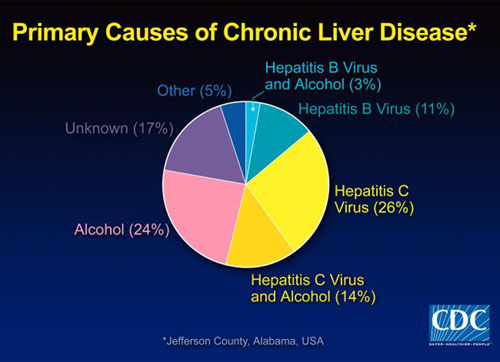Where is Your Liver Located, What is the Function of the Liver, and Other Liver Information
Looking for sharp liver information that will answer the question ‘Where is your liver located’ and other questions you may have regarding liver function and liver anatomy?
Well, you can stop your search right here. You’ve come to the right place.
After reading this article on the liver, you will be able to answer the questions:
– Where is the liver located?
– What is the function of the liver?
– What does the liver do when it has problems?
– And how can I improve liver function?
The good news is that the answers to these questions are actually quite simple, and below you will find all the liver information you need to know, including how to protect your liver anatomy, how to have a healthy liver, and what you can do to improve liver function.
Where is Your Liver: Where is the Liver Located?
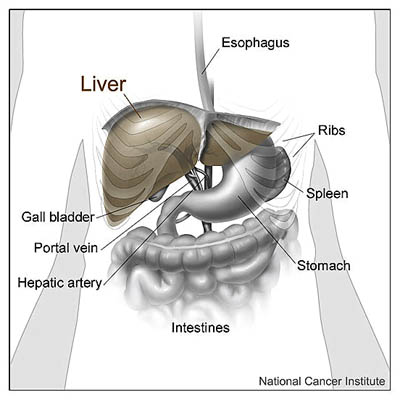 Answers to where is your liver located, what does the liver do and how to keep a healthy liver.
Answers to where is your liver located, what does the liver do and how to keep a healthy liver.
So where is your liver?
Well, first of all the liver is a nifty little organ that you can find nestled snugly beneath your ribs on the right side of your body. It is immediately beneath your lungs and your heart, and it kind of wraps protectively around the top part of your stomach.
Your liver usually weighs somewhere between 3 and 6.5 pounds (between 1.3 and 3 pounds), which is roughly 2/3 the weight of the average newborn baby.
Its color is kind of a pink and brown combination, and it is shaped like a boomerang. It is actually the second largest organ in your body (your skin is the largest organ), and is your body’s largest gland.
An awesome fact about your liver is that it can regenerate itself from as little as 25% of its total mass, as the liver is made up of a bunch of cells (hepatocytes) that work like stem cells that divide into new cells.
This means that your liver is one of the most resilient organs in your body.
What is the Function of the Liver?
Answers to where is your liver located, what does the liver do and how to keep a healthy liver.
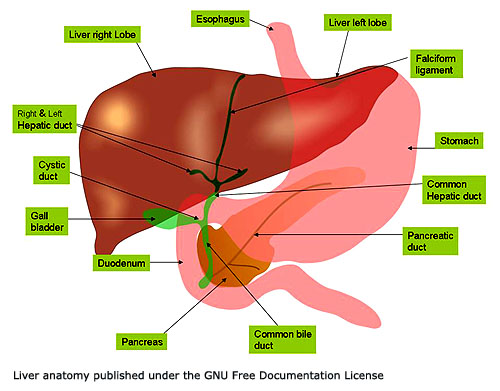 The liver is actually one of the most powerful organs in your body (next to the brain and heart, probably), and it serves more functions than most of your organs.
The liver is actually one of the most powerful organs in your body (next to the brain and heart, probably), and it serves more functions than most of your organs.
The fact that it isn’t the star of the show like your brain and heart doesn’t make it any less important, as it is kind of like a stage manager and the “show” (your body’s functions) cannot operate without the liver.
So what is the function of the liver?
• Metabolizing Carbs – Your liver is responsible for the metabolism of carbohydrates, turning most forms of glucose into food for your cells. It breaks down hormones and insulin once they have been used, metabolizes proteins, produces glycogen and stores it, breaks down stored glycogen and turns it into glucose, and creates glucose from amino acids.
• Bile Production – Bile is needed by your body in order to dissolve the fat in the food you eat, and your liver is responsible for producing bile. Some of the bile is kept in the gall bladder (your body’s storage container), while some of it is drained directly into your small intestine’s second area: the duodenum.
• Metabolizing Fats – Your liver has to metabolize cholesterol in order to create hormones and rebuild the walls of your body’s cells, and it is also responsible for the production of triglycerides that are stored in your body. This is serum cholesterol, and is usually healthy when normal cholesterol levels are maintained.
• Controls Clotting – Your liver is responsible for ensuring that the clots your body produces (usually with an injury) are formed properly, and it makes sure that they are cleaned up by the body once their usefulness is over.
• Toxin Breakdown – One of the liver’s primary functions is to ensure that toxic substances are broken down. These toxins can include medications, which need to be broken down to ensure that the body can handle them.
• Hemoglobin Breakdown – Your red blood cells have a special part that is responsible for carrying iron, and this is known as hemoglobin. Your liver has to break down the hemoglobin, and this breakdown creates the metabolites that turn your bile the sickly yellow color that it normally is.
• Ammonia Conversion – The liver has to convert the ammonia (a very toxic substance that is the byproduct of the production and synthesis of protein in the body) into urea, and this synthesis is incredibly important due to the fact that too much ammonia can be potentially fatal. The urea is then sent out in your urine, via your kidneys.
• Storage Area – Your liver is responsible for storing a number of different substances, such as Vitamin B12, copper, iron, glycogen, and many more. All of these substances are essential for your body, but cannot be used at all times. The liver stores it until it is needed by your body, at which time it can be accessed.
• Immunological Center – The liver basically controls all of the immunological effects in your body, such as sifting out antigens from your blood and disposing of them.
• Red Blood Cell Production – The liver takes care of producing the blood cells during the first three months of the gestation period during pregnancy, which is normally the job of the bone marrow. However, the bone marrow is only able to completely handle the production of the red blood cells once the child reaches the 32nd week of gestation, so the liver lends a helping hand until the baby’s bone marrow can handle the production.
As you can see, your liver is the unsung hero of your body’s organs, and it is incredibly important that you do what you can to take care of this large organ.
Where is Your Liver: More Liver Information on Liver Related Diseases
Answers to where is your liver located, what does the liver do and how to keep a healthy liver.
There are many different things that can cause liver diseases, and this is where the liver information on the various diseases will come in very handy.
With the information below, you can be on the lookout for symptoms of liver disease or you can recognize symptoms that you already have as being responsible for causing problems with your live.
Liver Information on Hepatitis A, Hepatitis B, Hepatitis C and Hepatitis D
There are four forms of hepatitis:
– Hepatitis A is usually spread via water (found in sewage, contaminated water, and spoiled food).
– Hepatitis B is usually spread via infected semen, infected secretions from the vagina, through infected blood, and through the blood passed from mother to newborn baby.
– Hepatitis C is spread only through direct contact with blood.
– Hepatitis D is usually spread via blood transfusions and needles that involve infected blood.
Both Hepatitis B and C can be prevented by blood donation screening, as well as being careful with items that can come in contact with human fluids (toothbrushes, razors, etc.).
Hepatitis C basically results in a swollen liver, which impairs the natural functioning of this vital organ.
Liver Information on Cirrhosis
Cirrhosis usually is caused by drinking way too much alcohol, an infection of hepatitis in the liver, or having contact with chemicals that are toxic to your liver.
What happens in the case of cirrhosis is that fibrous tissue begins to form in your liver, as it tries to replace damaged liver cells.
Liver Information on Liver Cancer
The Big C is usually caused by carcinogens that spread to your liver.
The cells can be produced in the liver itself, or it can be passed to the liver via cancerous cells from your gall bladder.
Metastatic cancers in the digestive system can also be spread to the liver, thus causing cancerous growths to begin to form in the liver.
Liver Information on Primary Biliary Cirrhosis
This is an autoimmune disease that is found in the tiny bile ducts that drain the bile from the liver, and the cirrhosis prevents the bile from draining properly.
Gilbert’s Syndrome
Gilbert’s Syndrome is a genetic disorder that is passed down from parent to child, and it is a relatively uncommon disease (usually found in less than 5% of the people in the world).
This is a bilirubin metabolism disorder, which affects the function of the liver.
Wilson’s Disease
Wilson’s Disease is a disorder that causes your body to store more copper than it needs, thereby basically poisoning your body with too much of this metal.
It is a hereditary disease that is passed down from parent to child.
Hemochromatosis
Hemochromatosis causes your body to accumulate a lot of iron, which is transported via your blood stream.
When you have too much iron in your body, it basically causes your liver to be infused with too much of the powerful metal and problems begin to arise.
These are some of the most common liver problems that require intervention in order not to lead to more serious liver damage.
How Can I Have a Healthy Liver?
Answers to where is your liver located, what does the liver do and how to keep a healthy liver.
“How can I have a healthy liver?” This is one of the most commonly posed questions by people who are suffering from liver disease, but very few people ask before their liver starts to malfunction.
It is incredibly important that you do what you can to protect your liver before the problems start to come up, as preventing liver disease is much easier, cheaper, and less painful than trying to correct it.
If you want to keep your liver healthy, here are a few tips for you:
1. Make it Easy on Your Liver
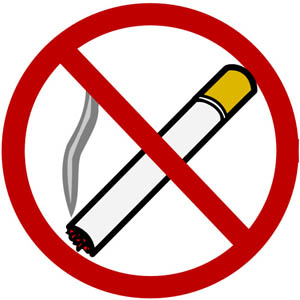 Answers to where is your liver located, what does the liver do and how to keep a healthy liver.
Answers to where is your liver located, what does the liver do and how to keep a healthy liver.
The number of people who place excess strain on their liver is quite high, but most of these people have absolutely no idea that they are doing so.
You can overtoxify your body by using toxic skin care products, eating food that has toxins, smoking, being careless with strong chemicals and household products, and eating the wrong foods.
It is important that you make it easy for your liver to get rid of all the toxins, so try to eat organic as much as possible, use non-toxic products, and avoid contact with tobacco and chemicals.
2. Lose Weight
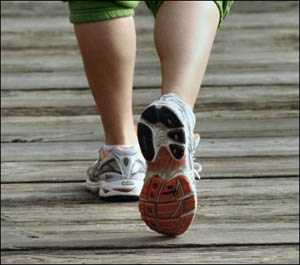 Answers to where is your liver located, what does the liver do and how to keep a healthy liver.
Answers to where is your liver located, what does the liver do and how to keep a healthy liver.
Many people that are overweight might also have problems with fatty liver disease and other liver disorders, as there is just too much fat and cholesterol for the liver to get rid of.
Being overweight puts a good deal of strain on your liver, so in order for you to keep a healthy liver it is recommended that you try to lose weight.
However, don’t lose the weight too quickly, as that can make the problems worse. Try losing no more than a pound or two (.6 to 1 kilogram) a week in order to give your liver a break.
3. Try Milk Thistle
Answers to where is your liver located, what does the liver do and how to keep a healthy liver.
Milk thistle is a great product that can help to improve your liver function, as it actually helps to rebuild your liver and restore it to proper working condition.
It can help to decrease the enzymes that are causing the problems in your liver, prevent any scar tissue from forming on your liver, and will help your liver to regrow itself much faster.
4. Cut Back on Sugars
Answers to where is your liver located, what does the liver do and how to keep a healthy liver.
Sucrose and fructose are usually found in soda, unhealthy fruit juices, corn syrup, and other artificial or processed sugar forms.
Avoid these sugars like the plague, as they not only risk bringing on fatty liver disease in the long term, but they can also cause the swelling of your liver that will begin all your troubles.
Try and get no more than 200 of your daily calories from sugar in order to keep your liver healthy.
5. Try Fish Oil
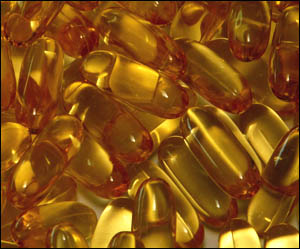 Answers to where is your liver located, what does the liver do and how to keep a healthy liver.
Answers to where is your liver located, what does the liver do and how to keep a healthy liver.
Fish oil has many amazing benefits, one of which is helping to prevent fat from accumulating in your liver.
It can also help your liver process insulin better, cut back on your triglycerides, and prevent and reduce swelling. You will find that you can greatly improve the condition of your liver just by taking a bit of fish oil on a regular basis.
It doesn’t seem like a big deal, but you will be surprised to find that taking just these few simple steps is enough to help keep your liver healthy. Take the steps today and your liver will thank you.
What Does the Liver Do When It Has Problems?
Answers to where is your liver located, what does the liver do and how to keep a healthy liver.
Many people don’t know what the liver does when it has problems, but it reacts in the same way that most of the other organs do: it swells up.
The inflammation of the liver usually leads to further problems, but the swelling of the liver is usually what starts the chain reaction that leads to all the other symptoms.
When your liver swells up, you will begin to notice:
• You are usually a lot more tired
• You feel pain beneath the right side of your rib cage
• Your feces is usually grey or very pale
• Your skin gets really itchy
• You feel confused and unable to focus
• You get allergies or sensitivities when you have never had them
• You have a hard time digesting your food, especially fats
• Your skin turns yellow
• You feel that your stomach, feet, and ankles are swollen
• You tend to feel nauseous all the time, which is usually accompanied by vomiting
All of these things are your body’s reaction to your liver’s problems, and they are good signs that your liver is having trouble with something.
If you notice even one or two of these symptoms, it is best to take it as a warning from your liver that “Hey, having some trouble here. Little help?”
Improving Liver Function
Answers to where is your liver located, what does the liver do and how to keep a healthy liver.
Improving liver function is very important, as your liver is one of the most important organs in your body. If you can to keep your liver functioning well, here are some ways that you can improve your liver function effectively without the need for medication:
1. Cleanse – Using a colon and liver cleanse once or twice a year can help you to flush all the nasty toxins out of your body, and will help ensure that your internal organs are functioning well.
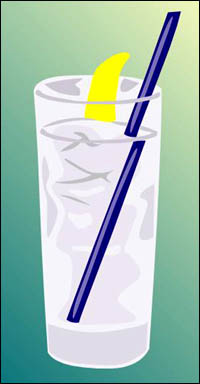 2. Drink – Gets lots of water in your diet, as drinking lots of water helps to flush out all the toxins from your body and prevents your body from retaining water (thereby retaining toxins).
2. Drink – Gets lots of water in your diet, as drinking lots of water helps to flush out all the toxins from your body and prevents your body from retaining water (thereby retaining toxins).
3. Eat – Make sure to add lots of fiber to your diet, as that will help to absorb all the toxins and send them out the garbage disposal system.
4. Supplement – Consider taking supplements that will improve your liver function, such as milk thistle, Omega 3, vitamin C, etc.
5. Reduce – Lessen the amount of fat you eat, as well as the amount of sugar that you allow in your diet.
6. Avoid – Make sure to avoid foods that are past their due date, as they may contain toxins that can cause liver problems.
Where is Your Liver: Things You Need to Know About Protecting Your Liver Anatomy
Answers to where is your liver located, what does the liver do and how to keep a healthy liver.
Protecting your liver anatomy is important, as your liver will respond to damage by causing some of the problems mentioned above.
You can protect your liver by following a diet that promotes liver health, keeping your body as free of toxins as possible, being careful in your sexual interactions with others, avoiding chemicals, and being sure that any injections or blood transfusions you receive are safe.
Protecting your liver is one of the most important things you can do.
What Would You Like to Read Now After This Article on Where Is Your Liver?
Keys to a Liver Detox Diet and Healthy Liver Diet
Healthy Liver Supplements: Your Detailed Guide to a Natural Liver Cleanse Diet
Guide to a Healthy Liver Diet: Make Your Own Liver Cleansing Diet
Lots of Healthy Liver Diet Tips and Free Liver Diet Examples
In-Depth Liver Cleanse Recipe Information: The Best Natural Liver Cleansing Tips for Liver Flushing and Detox
Your Guide to a Powerful Liver Cleanse Diet: Choose the Right Kinds of Fiber, Protein, Vegetables, Fruits and Fats in Your Healthy Liver Diet
The Effective Liver Diet: Step by Step Guidelines to a Natural Liver Detox Diet
The Research-Based Liver Flush Guide: Beyond the Myths of Radical Detox Methods
The Wonder of the Milk Thistle Liver Supplement for a Natural Liver Detox
Symptoms of Liver Problems – How to Know if You Need a Natural Liver Detox
Taking a Liver Function Test – Catching Symptoms of Liver Problems Early On
Fatty Liver Diet Supplements, Herbs and Foods along with Insights into the Causes of Fatty Liver
Fatty Liver Disease in Depth: Typical Signs and Symptoms, Alcoholic and Non-Alcoholic Causes and Dietary & Medicine Treatments
Fatty Liver Causes: Alcoholic (AFLD) and Nonalcoholic (NAFLD) In-Depth
Go to the top of this article about Where Is Your Liver
Go to the homepage Liver Cleansing Diet
